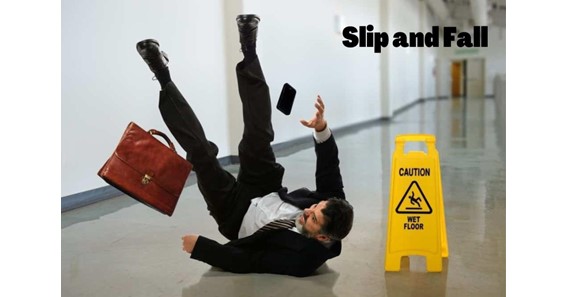Slip and fall incidents are frequent at work, resulting in fatalities or serious injuries. According to the National Safety Council, these are the most common causes of occupational injuries in the United States, with over 8 million visits to hospital emergency rooms every year. Understanding the typical reasons for slip and fall accidents at work will help you prevent them, whether you’re an employer or an employee. In this article, we’ll talk about the common reasons why slip and fall accidents happen and what you should do if you experience one.
Uneven Surfaces
One common cause of slip and fall accidents is uneven surfaces. This can occur when flooring or sidewalks are cracked or potholed. Uneven surfaces can be challenging to spot and catch employees off guard, causing them to trip and fall. Employers should inspect their premises regularly to identify any rough surfaces and take steps to repair or replace them. In case of an injury due to poor maintenance, the victim may be entitled to compensation.
Under Pennsylvania’s slip and fall laws, property owners can be held responsible for the dangerous situations that lead to these accidents. The compensation you can claim for a slip and fall accident can include reimbursement for medical expenses, lost wages, pain and suffering, and other losses.
Click here – How to Pay off Your Student Loans Faster: Expert Advice and Strategies
Wet and Slippery Surfaces
Wet or slippery surfaces are among the most frequent reasons for slip and fall accidents in the workplace. This can happen when outdoor surfaces are wet from rain, snow, or ice or when floors are wet from spills or have just been mopped. Employers are responsible for keeping their workplaces risk-free.
Lack of Proper Footwear
Lack of proper footwear is another major factor in a workplace slip and fall incidents. The risk of falling increases when people wear shoes with worn-out soles, high heels, or inappropriate footwear for the task at hand. Workers should wear slip-resistant footwear for added traction and to help prevent falls. Employers should outfit workers with appropriate footwear and urge them to wear it while working.
Poor Lighting
Employees may struggle to see potential hazards in poor lighting, which raises the possibility that they will slip and fall. Employees may trip or fall due to poor visibility, shadows, and low light conditions. All workplace areas should have adequate lighting, and broken light fixtures should be replaced immediately. Employers should also ensure that their property is well-lit inside and outside to reduce the risk of slip and fall accidents.
Lack of Training
Employees are more likely to experience slip and fall accidents if they haven’t received the proper training to recognize and avoid hazards. The right training should cover topics like spotting potential dangers, the correct type of footwear to wear, navigating slippery or uneven terrain safely, and what to do in an accident. Employers should prioritize training to guarantee that all staff members have the skills necessary for workplace safety.
Click here – 5 Ways to Travel Often When Working a Remote Job
Negligence
The upkeep of a secure workplace for employees is the employer’s responsibility. Serious accidents can be caused by failing to address hazards, not providing adequate safety equipment, or ignoring potential risks. If you are a victim of a slip and fall accident due to employer negligence, you can file a personal injury claim and seek compensation.
Conclusion
Fall incidents are avoidable, and employers must secure their workers’ workspaces. Employers can aid in preventing slip and fall accidents by identifying and addressing potential hazards, providing suitable safety gear and footwear, and implementing regular training. You might be entitled to compensation if you were hurt in a slip and fall accident due to employer negligence. It is crucial to seek legal counsel from a qualified personal injury attorney who can walk you through the process and assist you in pursuing the compensation you are entitled to.

